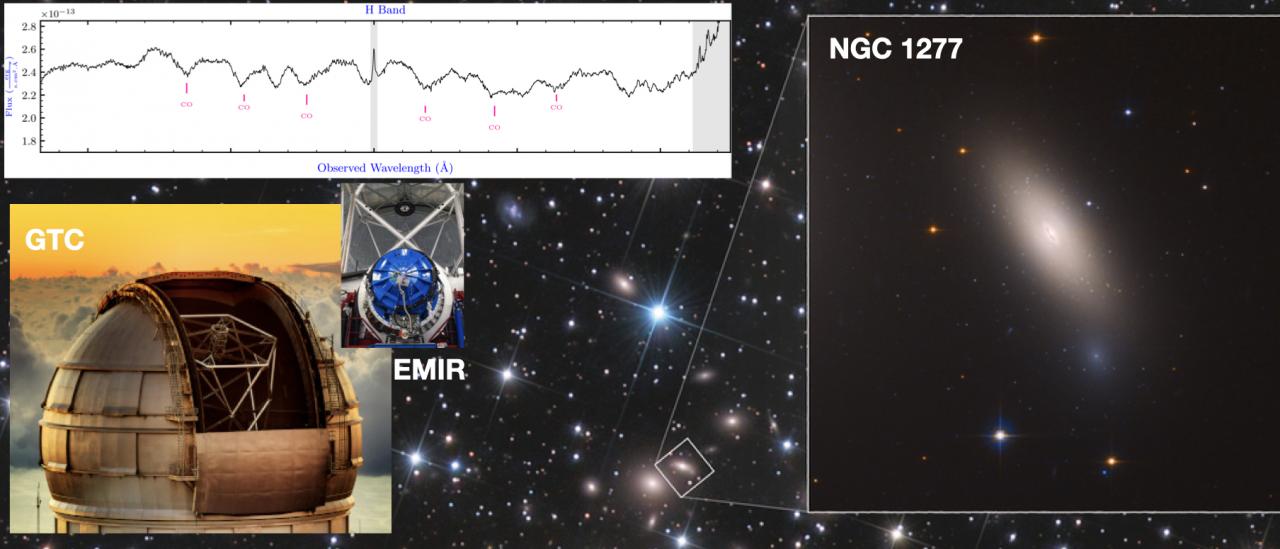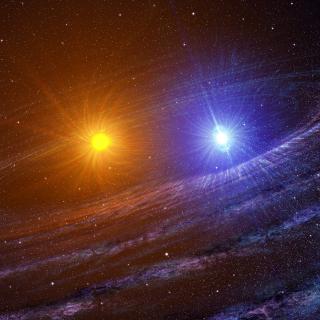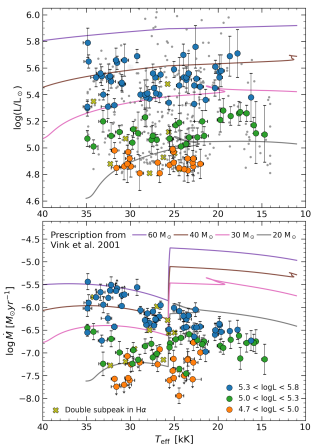Puzzling properties of massive early-type galaxies (ETGs) emerge when studying their spectra at near-infrared (NIR) wavelengths. Massive ETGs show strong CO absorption features in their H and K band spectra that cannot be explained by state-of-the-art stellar population models. For many years, the disagreement has been attributed to the presence of intermediate-age (0.1-2 Gyr) stellar populations in these galaxies, as the NIR light of intermediate-age stellar populations is dominated by cool stars (e.g. asymptotic giant branch (AGB) stars) that show strong CO absorptions in their spectrum. However, no robust evidence of this scenario has been provided so far. In our recent work, we tested this claim by comparison of CO indices for massive ETGs and for a prototype of a class of galaxies, called "relic" galaxies, that lack intermediate-age stellar populations. According to the increasingly popular two-phase galaxy formation scenario, the core of today's massive ETGs is formed in-situ in a fast dissipative (gas-rich) event at z > 2 with very high star formation rates, followed by a later accretion phase. As relic galaxies skipped this second phase, they are shown to host very old, pristine stellar populations (≥ 10Gyr) along their entire structure and, therefore, do not host significant contributions from AGB-dominated intermediate-age stellar populations. Here we found that CO absorptions on the spectrum of the relic galaxy NGC 1277 are significantly stronger than stellar population models, like the ones in massive ETGs. Therefore, strong CO absorptions in massive ETGs are not due to the existence of intermediate-age stellar populations in these galaxies. This result implies that massive ETGs do not contain a substantial fraction of intermediate-age stellar populations, and therefore, they had experienced less extended star formation histories. This is consistent with the overall picture of galaxy formation and evolution, obtained using optical spectral window.
Background is a Hubble Space Telescope image of NGC 1277 (Credits: NASA, ESA, M. Beasley, and P. Kehusmaa). Bottom-left shows the GTC/EMIR H-band spectrum of NGC 1277 (Credits: pictures of GTC and EMIR are from GTC website).
Advertised on
Authors
Alexandre
Vazdekis Vazdekis
M. Beasley
References




